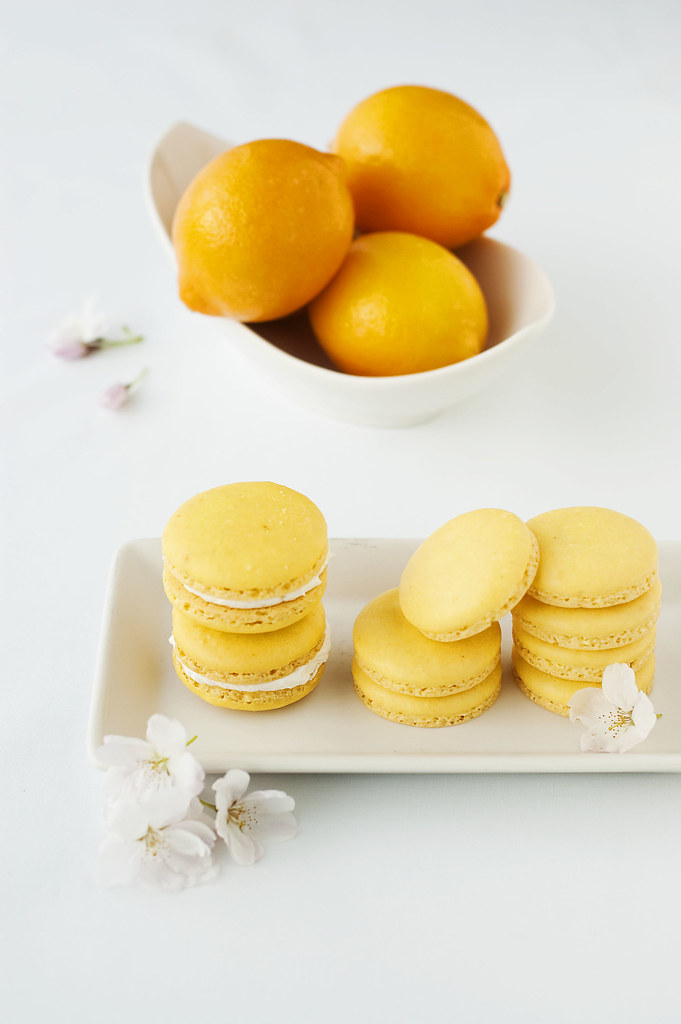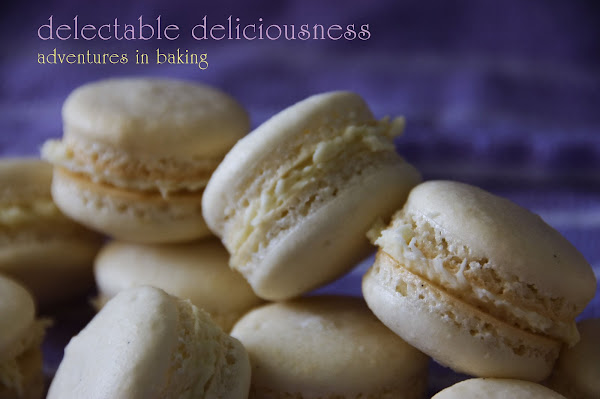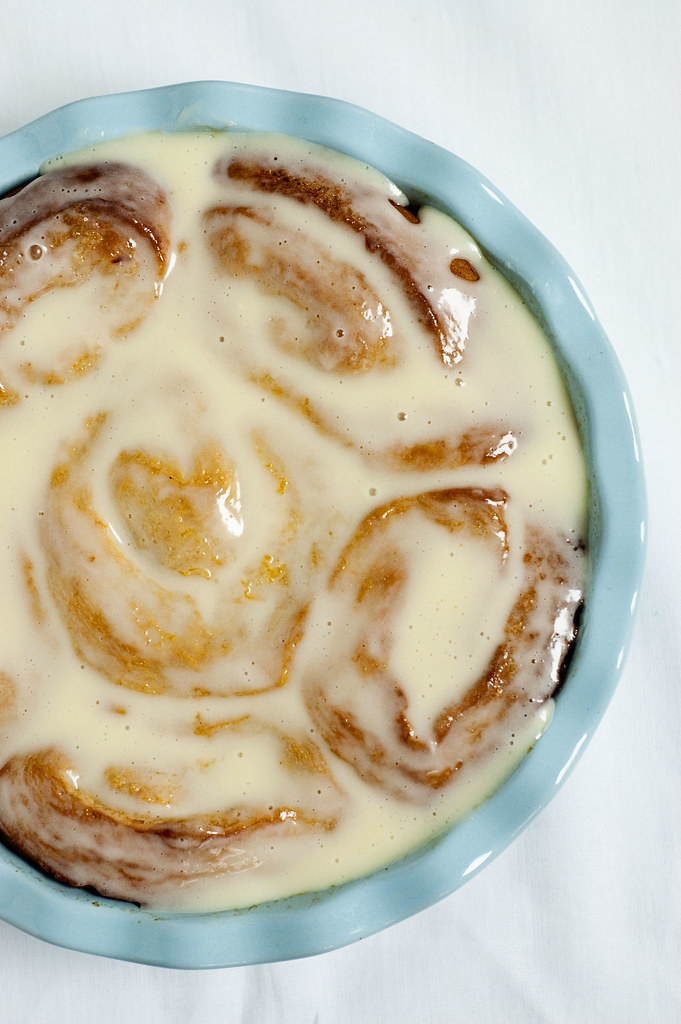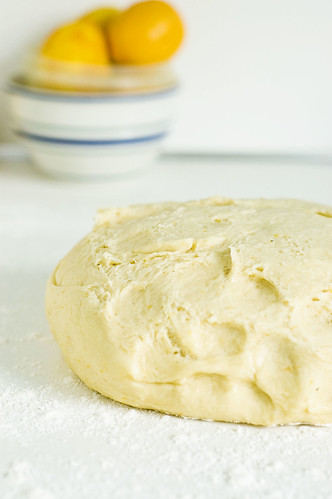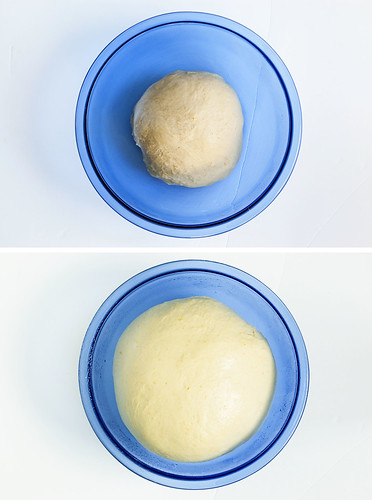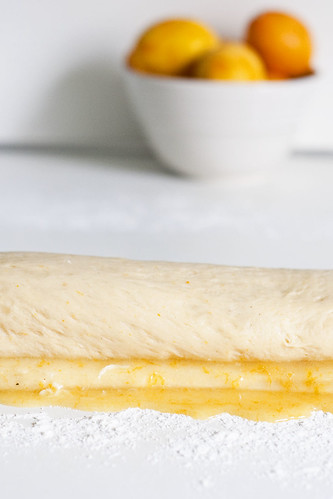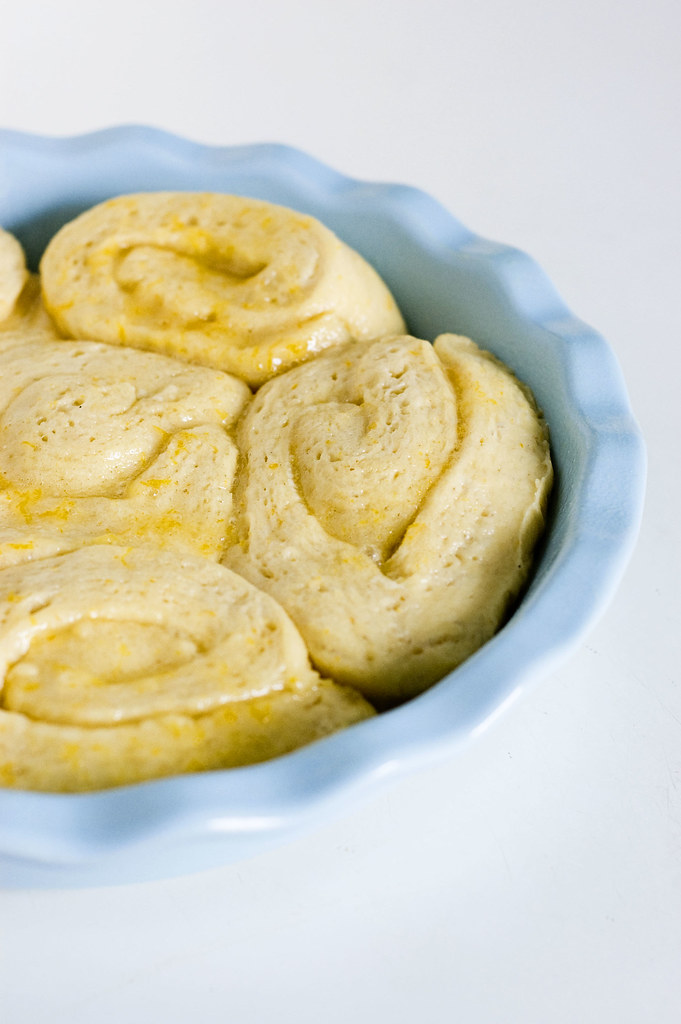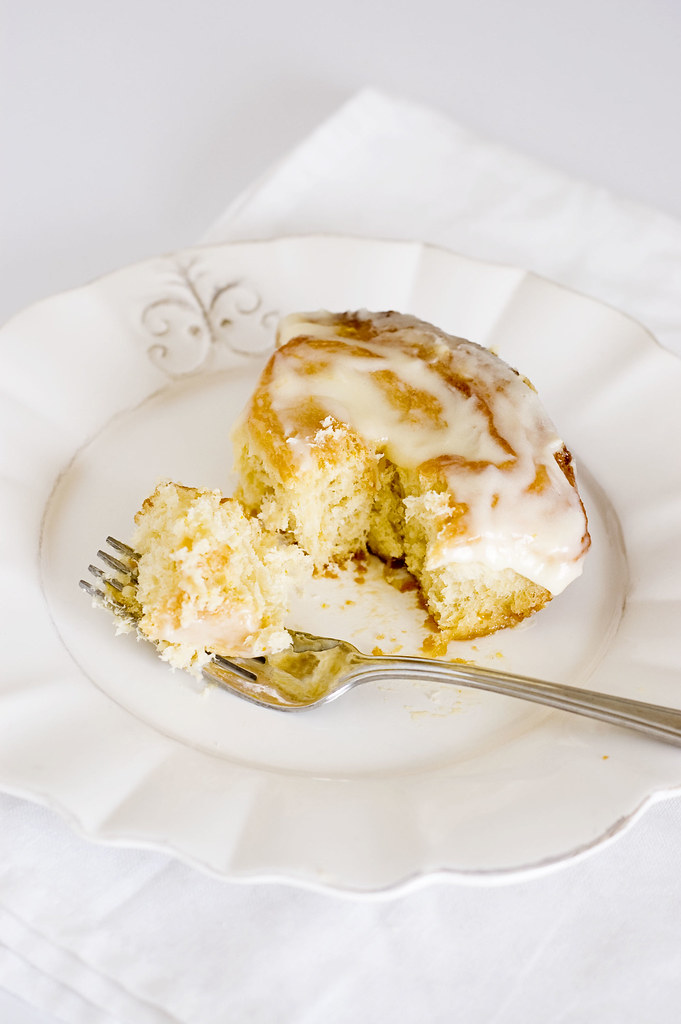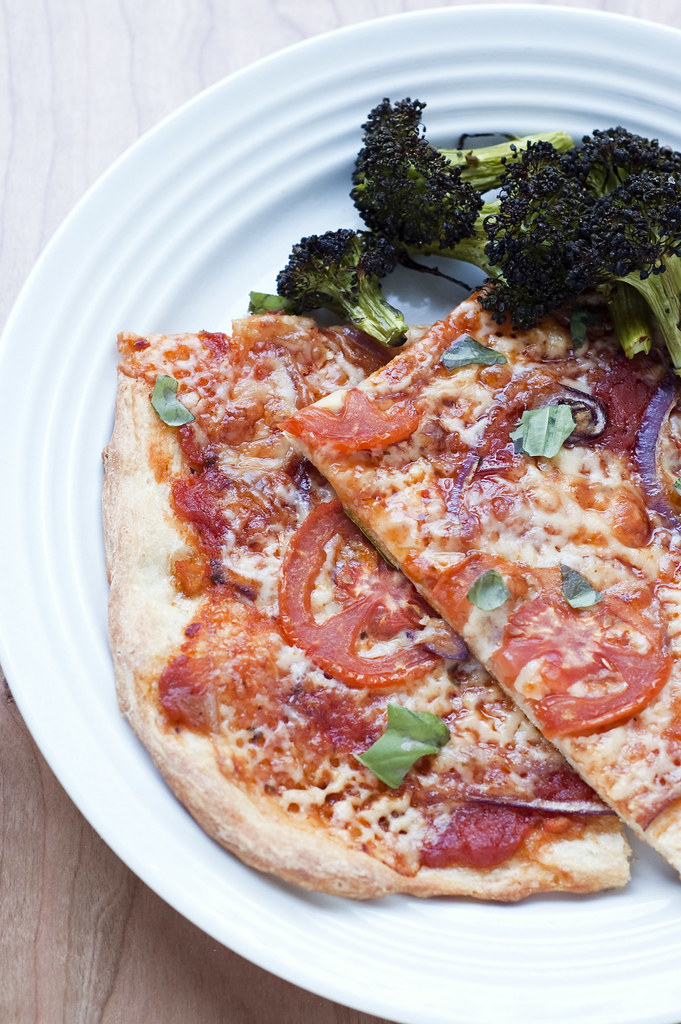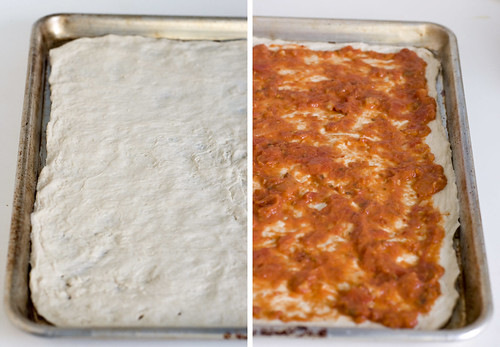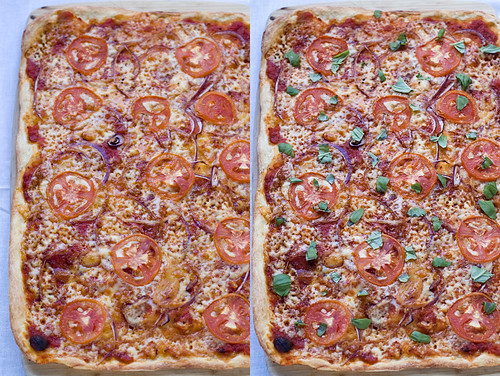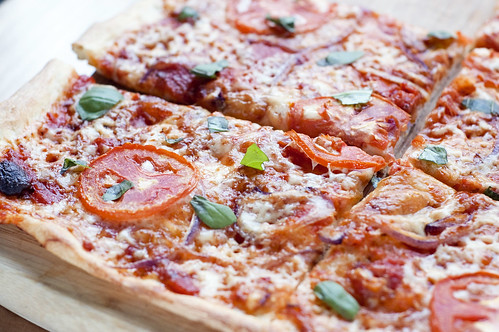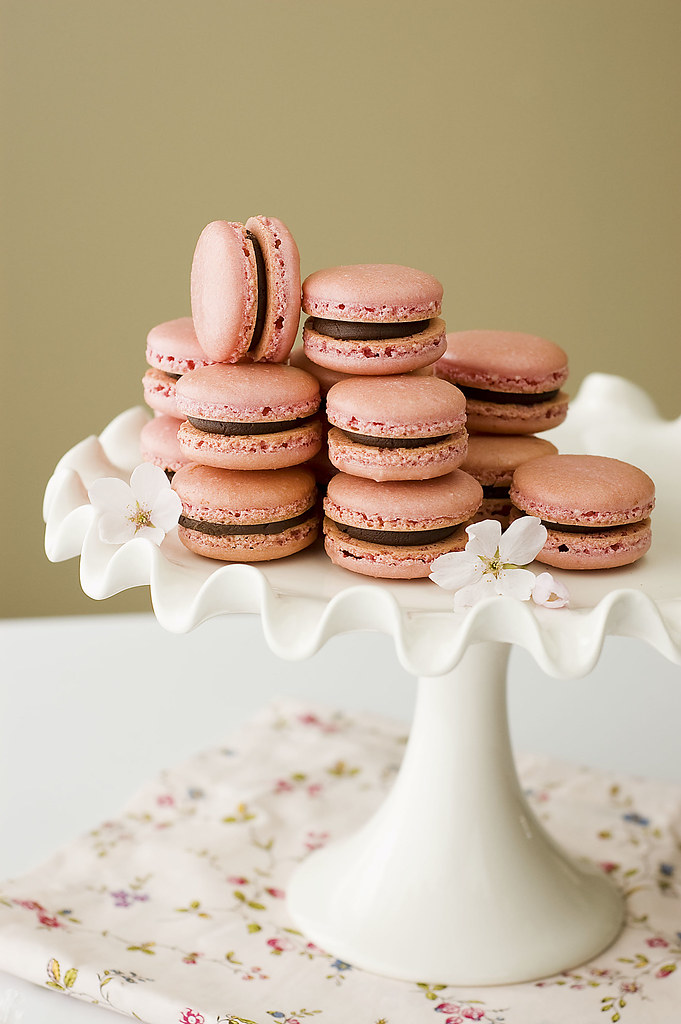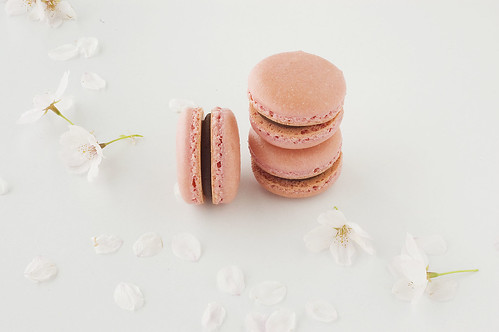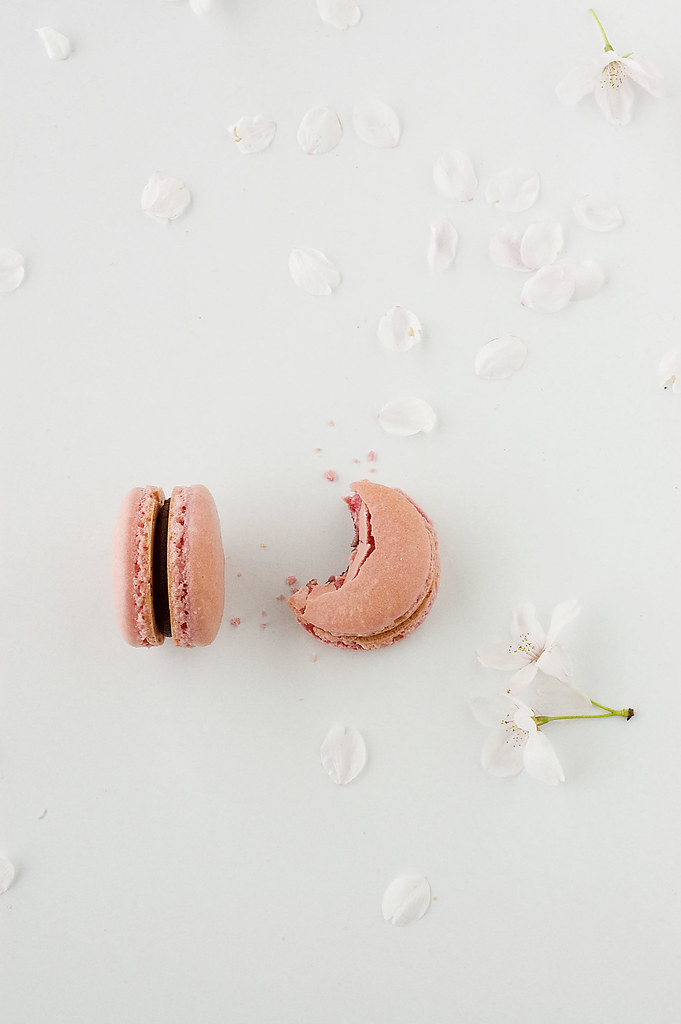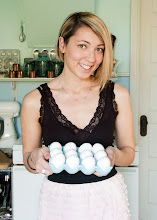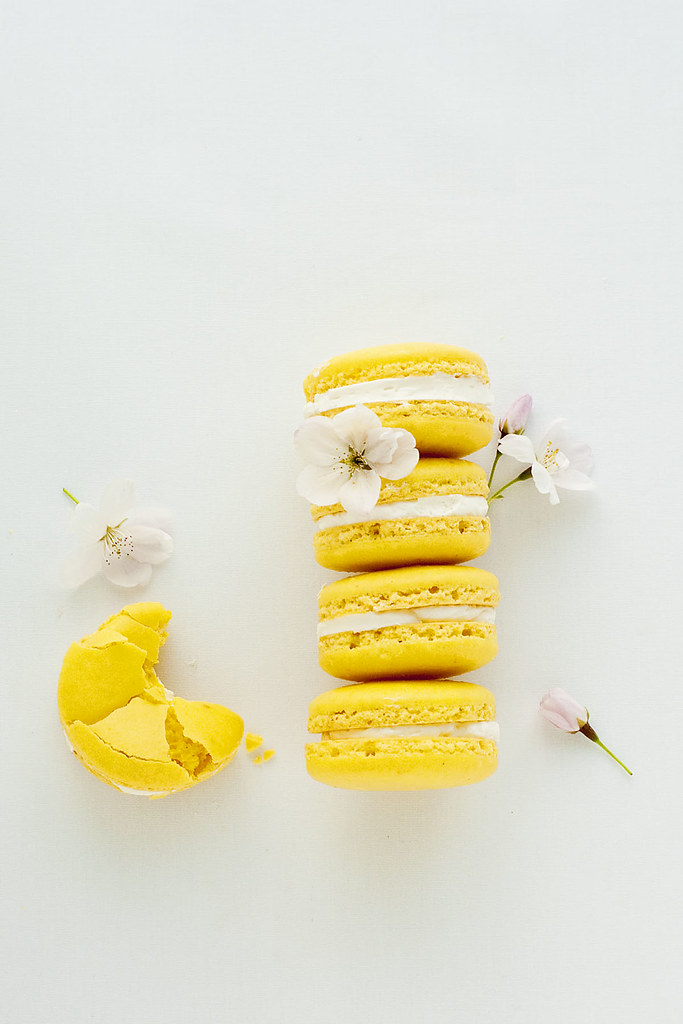
****Just a quick note - there's still time to enter my Emile Henry giveaway! You have until Friday, April 30th to enter. Check out my previous post for details! CLICK HERE***
As I mentioned in my previous post, I had a lemon curd filled macaron not long ago that ignited an interest in me for all things lemon. Naturally, I felt another lemony macaron was in order. Enter these beauties. Not only did they satisfy my craving for (and new found love of) lemon, they also helped me appreciate that other type of lemon, that of the Meyer variety.
I had never heard of a Meyer lemon prior to last year when I became consumed by the food blog world (no pun intended ha!) where I saw them popping up all over the place once citrus season arrived. It seemed as if everyone raved about the flavor so I was excited when I found some. They're said to be sweeter than regular lemon - a cross between a lemon and mandarin orange. I excitedly made madelienes with them and when I first took a bite I was well, less than floored. Disappointed, actually. They tasted weird. I couldn't put my finger on it, but they didn't taste anything like what I expected. I wanted to like them, I really did. Yet with each bite I was met with a flavor I just didn't like. Did I use a bad one? Perhaps there was chemical residue left on the skin that turned my zest foul? I wasn't sure. Into the trash those madelienes went. After that, I decided they just weren't my thing and put the Meyer lemon out of my mind, happy to use the less pricier common lemon when the need arose.
Fast forward to a day in March when I decided to give the ol Meyer lemon another shot. I'm not sure why, but I felt I needed to give them another chance. I made these macarons and they turned out great! I still tasted a certain hint of je ne sais quoi - it's lemon, but different. This time, the difference turned out to be good. For a little comparison, I made another batch, this time using a regular lemon. The difference was very distinguishable and, surprise surprise, I found that I preferred the Meyer lemon version!
Not long after I made these, I started an herb garden (fingers crossed - I'm terrible with plants!) with some frequently used herbs in our house hold: basil, Italian parsley, chives, oregano, sage. I also picked up some lemon thyme, which when I rubbed the leaves and took a sniff of I was surprised to find that to me, it smells just like how a Meyer lemon tastes (well, in baked goods anyway)! Intriguing. Is that just me? Maybe, but I'm happy to have found an appreciation for both Meyer lemons and now, oddly enough, lemon thyme.
Meyer Lemon Macarons
adapted from Helen's basic recpie
110 grams almond flour/meal
200 grams powdered sugar
90 grams aged egg whites (about 3)
30 grams granulated sugar
zest from 1 Meyer lemon
yellow food coloring (powdered or gel - see note below)
About 24 hours before you plan to make your macarons, set your egg whites out in a clean bowl to age. Keep them loosely covered, at room temperature with a paper towel to keep any stray dust out. This helps remove some of the moisture and helps you achieve a meringue that is more stable. (Note: If you end up not using your whites after 24 hours, cover them tightly and refrigerate for up to 5 days.)
Combine the almond flour, powdered sugar and zest. Get your hands in there and break up the clumps and lumps. You can sift if you like, but I prefer this more casual method. If you're using powdered food coloring, add it to the almond/sugar mixture. Set aside.
In a stand mixer, whisk your aged egg whites until they start to get foamy. Once you start to see enough foam to hide any remaining liquid egg white, sprinkle in your granulated sugar in a slow, steady sprinkle (or 'in the rain' as Helen says French recipes would state - love that description!). Continue to beat until you have a stiff, glossy meringue. This should take from 3-5 minutes in a stand mixer. You really want your whites stiff and cloud like.
Add your almond/powdered sugar mixture all at once. Gently stir to break down your whites a bit, then begin a careful fold. The key is to not over-beat the batter. The goal is to achieve an oozy mass that looks similar to a very thick pancake batter. It should be oozy, but not flowy - flowy means you've gone too far. Oozy is like thick magma - not the liquid hot, bright orange type of magma, the black on the outside, still red hot on the inside oozy type of magma that wouldn't worry you because you could easily out run it. Yeah, that type of magma.
Transfer your batter to a pastry bag fitted with a plain tip - #807 or #808 work best. Pipe your rounds onto silpat or parchment lined baking sheets. You can trace a circle on the underside of your parchment, or just pipe for a count of 4. No need to attempt a spiral shape (as I did when I made my very first few batches of macarons - makes for misshapen circles) instead, just pipe a nice single blob.
Once your shells are piped, smack your baking sheet a few times on the counter to pop any air bubbles you may have lurking. Don't be scared to really give the pan a good whack! Let them sit at room temperature to dry for 30 minutes to an hour - or when the tops are no longer tacky to the touch.
Bake at 315 F for 18 minutes, or until the shells are hard and cooked all the way through. It's important to know your oven and check on your shells near the end of baking time. I find that I have to bake my macarons at 325 for exactly 18 minutes in my oven - no more, no less. 18 minutes, every time, and at a higher temp than the recipe calls for. It may take a few batches to really know how to judge your timing.
Meyer Lemon Swiss Meringue Buttercream
makes approximately 1 1/2 cups
2 egg whites
1/2 cup sugar
1/4 teaspoon salt
1/8 teaspoon cream of tartar
2 sticks unsalted butter, at room temp cut into chunks
1/2 teaspoon vanilla extract
3 tablespoons lemon juice
zest of 1-2 lemons, or to taste
In a double boiler, combine the egg whites, sugar, salt and cream of tartar. Use a hand held mixer to beat until the mixture becomes too hot to comfortably touch - approximately 5 minutes or so. Remove from heat and transfer mixture to the bowl of a stand mixer fitted with a whisk. Continue to beat until you have stiff peaks. Add the butter a few pieces at a time, beating the mixture thoroughly. Lastly, beat in the vanilla, lemon juice and zest. Use at room temperature.
A note on using food coloring with macarons - powdered is best but can be difficult to find at your local market (though is easily found online with a quick google search). One thing that I've found to work is to take gel food coloring (this probably also works with liquid food coloring, but I haven't tried it. Gel coloring is easily found at craft stores) and add it to the 30 grams of granulated sugar. Mix them together very well until the sugar is evenly coated. Spread the sugar out into a thin layer on a piece of foil. Turn your oven on to a low heat, such as 200 F and once it's reached temperature, turn it off. Place your colored sugar into the oven but leave the door open. After a few minutes, the sugar will be dry. Take the back of a spoon and break it up back into small granules, as it will be clumped together. Be sure to color your sugar more intensely than you want your macaron shells as the color will lighten once the rest of the ingredients are added.
